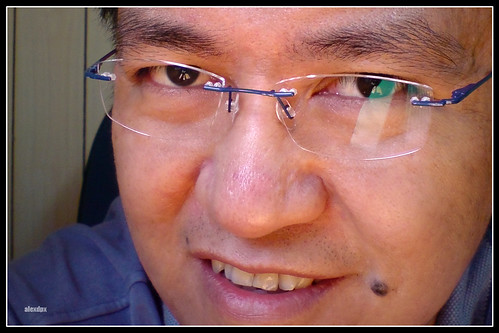As a Filipino reading this article by (allegedly) a British journalist, I can't help but smile because the descriptions he mentioned are exact to the point. However, I didn't realized how amusing they are before I read it.
I have now been in this country for over six years, and consider myself inmost respects well assimilated. However, there is one key step on the roadto full assimilation, which I have yet to take, and that's to eat BALUT.The day any of you sees me eating balut, please call immigration and askthem to issue me a Filipino passport. Because at that point there will beno turning back. BALUT, for those still blissfully ignorant non-Pinoys outthere, is a fertilized duck egg. It is commonly sold with salt in a pieceof newspaper, much like English fish and chips, by street vendors usuallyafter dark, presumably so you can't see how gross it is. It's meant to bean aphrodisiac, although I can't imagine anything more likely to dispelsexual desire than crunching on a partially formed baby duck swimming innoxious fluid.The embryo in the egg comes in varying stages of development, but basically it is not considered macho to eat one without fullydiscernable feathers, beak, and claws. Some say these crunchy bits are thebest. Others prefer just to drink the so-called 'soup', the vile, pungentliquid that surrounds the aforementioned feathery fetus...excuse me; I have to go and throw up now. I'll be back in a minute.
Food dominates the life of the Filipino. People here just love to eat. They eat at least eight times a day. These eight official meals are called, in order: breakfast, snacks, lunch, merienda, merienda ceyna, dinner, bedtime snacks and no-one-saw-me- take-that- cookie-from- the-fridge- so-it-doesn' t-count. The short gaps in between these mealtimes are spent eating Sky Flakes from the open packet that sits on every desktop. You're never far from food in the Philippines. If you doubt this, next time you're driving home from work, try this game. See how long you can drive without seeing food and I don't mean a distant restaurant, or a picture of food. I mean a man on the sidewalk frying fish balls, or a man walking through the traffic selling nuts or candy. I bet it's less than one minute.
Here are some other things I've noticed about food in the Philippines.Firstly, a meal is not a meal without rice - even breakfast. In the UK, I could go a whole year without eating rice. Second, it's impossible to drink without eating. A bottle of San Miguel just isn't the same without gambas or beef tapa. Third, no one ventures more than two paces from their house without baon (food in small container) and a container of something cold to drink. You might as well ask a Filipino to leave home without his pants on. And lastly, where I come from, you eat with a knife and fork. Here, you eat with a spoon and fork. You try eating rice swimming in fish sauce with a knife.
One really nice thing about Filipino food culture is that people always ask you to SHARE their food. In my office, if you catch anyone attacking their baon, they will always go, "Sir! KAIN TAYO!" ("Let's eat!"). This confused me, until I realized that they didn't actually expect me to sit down and start munching on their boneless bangus. In fact, the polite response is something like, "No thanks, I just ate." But the principle is sound – if you have food on your plate, you are expected to share it, however hungry you are, with those who may be even hungrier. I think that's great. In fact, this is frequently even taken one step further. Many Filipinos use "Have you eaten yet?" ("KUMAIN KA NA?") as a general greeting, irrespective of time of day or location.
Some foreigners think Filipino food is fairly dull compared to other Asian cuisines. Actually lots of it is very good: Spicy dishes like Bicol Express (strange, a dish named after a train); anything cooked with coconut milk; anything KINILAW; and anything ADOBO. And it's hard to beat the sheer wanton, cholesterolic frenzy of a good old-fashioned LECHON de leche (roast pig) feast. Dig a pit, light a fire, add 50 pounds of animal fat on a stick, and cook until crisp. Mmm, mmm... you can actually feel your arteries constricting with each successive mouthful. I also share one key Pinoy trait---a sweet tooth. I am thus the only foreigner I know who does not complain about sweet bread, sweet burgers, sweet spaghetti, sweet banana ketchup, and so on. I am a man who likes to put jam on his pizza.
Try it! It's the weird food you want to avoid. In addition to duck fetus in the half-shell, items to avoid in the Philippines include pig's blood soup (DINUGUAN); bull's testicle soup, the strangely-named "SOUP NUMBER FIVE" (I dread to think what numbers one through four are); and the ubiquitous, stinky shrimp paste, BAGOONG, and it's equally stinky sister, PATIS. Filipinos are so addicted to these latter items that they will even risk arrest or deportation trying to smuggle them into countries like Australia and the USA, which wisely ban the importation of items you can smell from more than 100 paces.
Then there's the small matter of the purple ice cream. I have never been able to get my brain around eating purple food; the ubiquitous UBE leaves me cold. And lastly on the subject of weird food, beware: that KALDERETANG KAMBING (goat) could well be KALDERETANG ASO (dog)...
The Filipino, of course, has a well-developed sense of food. Here's a typical Pinoy food joke: "I'm on a seafood diet. "What's a seafood diet?" "When I see food, I eat it!" Filipinos also eat strange bits of animals --- the feet, the head, the guts, etc., usually barbecued on a stick. These have been given witty names, like "ADIDAS" (chicken's feet); "KURBATA" (either just chicken's neck, or "neck and thigh" as in "neck-tie"); "WALKMAN" (pigs ears); "PAL" (chicken wings); "HELMET" (chicken head); "IUD" (chicken intestines), and BETAMAX" (video-cassette- like blocks of animal blood).Yum, yum. Bon appetit. "A good name is rather to be chosen than great riches"-- (Proverbs 22:1)
WHEN I arrived in the Philippines from the UK six years ago, one of the first cultural differences to strike me was names. The subject has provided a continuing source of amazement and amusement ever since. The first unusual thing, from an English perspective, is that everyone here has a nickname. In the staid and boring United Kingdom, we have nicknames in kindergarten, but when we move into adulthood we tend, I am glad to say, to lose them. The second thing that struck me is that Philippine names for both girls and boys tend to be what we in the UK would regard as overbearingly cutesy for anyone over about five. Fifty-five-year- olds colleague put it. Where I come from, a boy with a nickname like Boy Blue or Honey Boy would be beaten to death at school by pre-adolescent bullies, and never make it to adulthood. So, probably, would girls with names like Babes, Lovely, Precious, Peachy or Apples. Yuk, ech ech. Here, however, no one bats an eyelid.
Then I noticed how many people have what I have come to call "door-bell names". These are nicknames that sound like -well, doorbells. There are millions of them. Bing, Bong, Ding, and Dong are some of the more common. They can be, and frequently are, used in even more door-bell-like combinations such as Bing-Bong, Ding-Dong, Ting-Ting, and so on. Even our newly appointed chief of police has a doorbell name Ping. None of these doorbell names exist where I come from, and hence sound unusually amusing to my untutored foreign ear. Someone once told me that one of the Bings, when asked why he was called Bing, replied, "because my brother is called Bong". Faultless logic. Dong, of course, is a particularly funny one for me, as where I come from "dong" is a slang word for well; perhaps "talong" is the best Tagalog equivalent.
Repeating names was another novelty to me, having never before encountered people with names like Len-Len, Let-Let, Mai-Mai, or Ning-Ning. The secretary I inherited on my arrival had an unusual one: Leck-Leck. Such names are then frequently further refined by using the "squared" symbol, as in Len2 or Mai2. This had me very confused for a while. Then there is the trend for parents to stick to a theme when naming their children. This can be as simple as making them all begin with the same letter, as in Jun, Jimmy, Janice, and Joy. More imaginative parents shoot for more sophisticated forms of assonance or rhyme, as in Biboy, Boboy, Buboy, Baboy (notice the names get worse the more kids there are-best to be born early or you could end up being a Baboy). Even better, parents can create whole families of, say, desserts (Apple Pie, Cherry Pie, Honey Pie) or flowers (Rose, Daffodil, Tulip). The main advantage of such combinations is that they look great painted across your trunk if you're a cab driver. That's another thing I'd never seen before coming to Manila -- taxis with the driver's kids' names on the trunk. Another whole eye-opening field for the foreign visitor is the phenomenon of the "composite" name. This includes names like Jejomar (for Jesus, Joseph and Mary), and the remarkable Luzviminda (for Luzon, Visayas and Mindanao, believe it or not). That's a bit like me being called something like "Engscowani" (for England, Scotland, Wales and Northern Ireland). Between you and me, I'm glad I'm not.
And how could I forget to mention the fabulous concept of the randomly inserted letter 'h'. Quite what this device is supposed to achieve, I have not yet figured out, but I think it is designed to give a touch of class to an otherwise only averagely weird name. It results in creations like Jhun, Lhenn, Ghemma, and Jhimmy. Or how about Jhun-Jhun (Jhun2)?
How boring to come from a country like the UK full of people with names like John Smith. How wonderful to come from a country where imagination and exoticism rule the world of names. Even the towns here have weird names; my favorite is the unbelievably named town of Sexmoan (ironically close to Olongapo and Angeles). Where else in the world could that really be true? Where else in the world could the head of the Church really be called Cardinal Sin? Where else but the Philippines! Note: Philippines has a senator named Joker, and it is his legal name.]”
I wish I could give credit where credit is due. However, the name of the original author was not mentioned.
Cheers,







